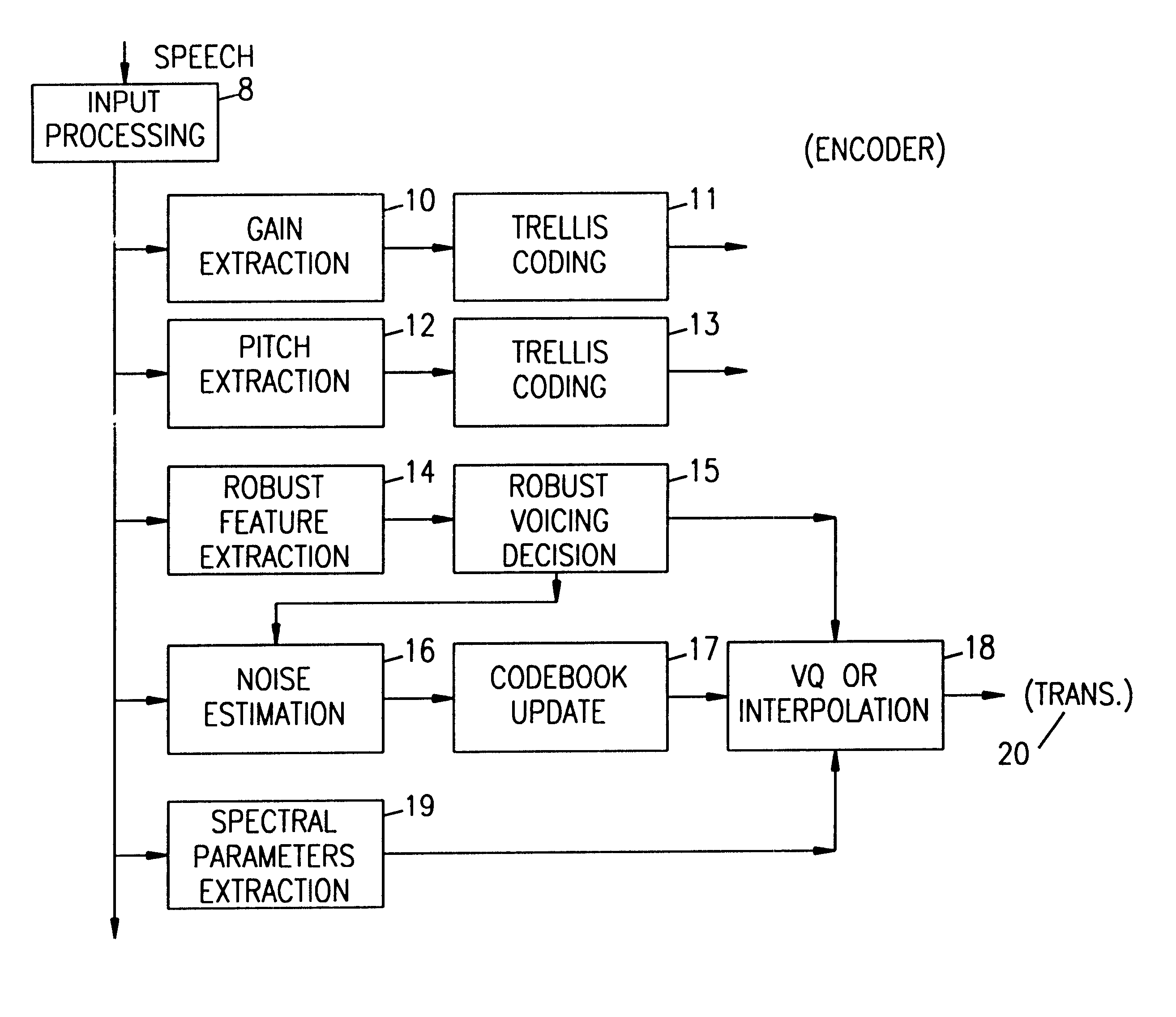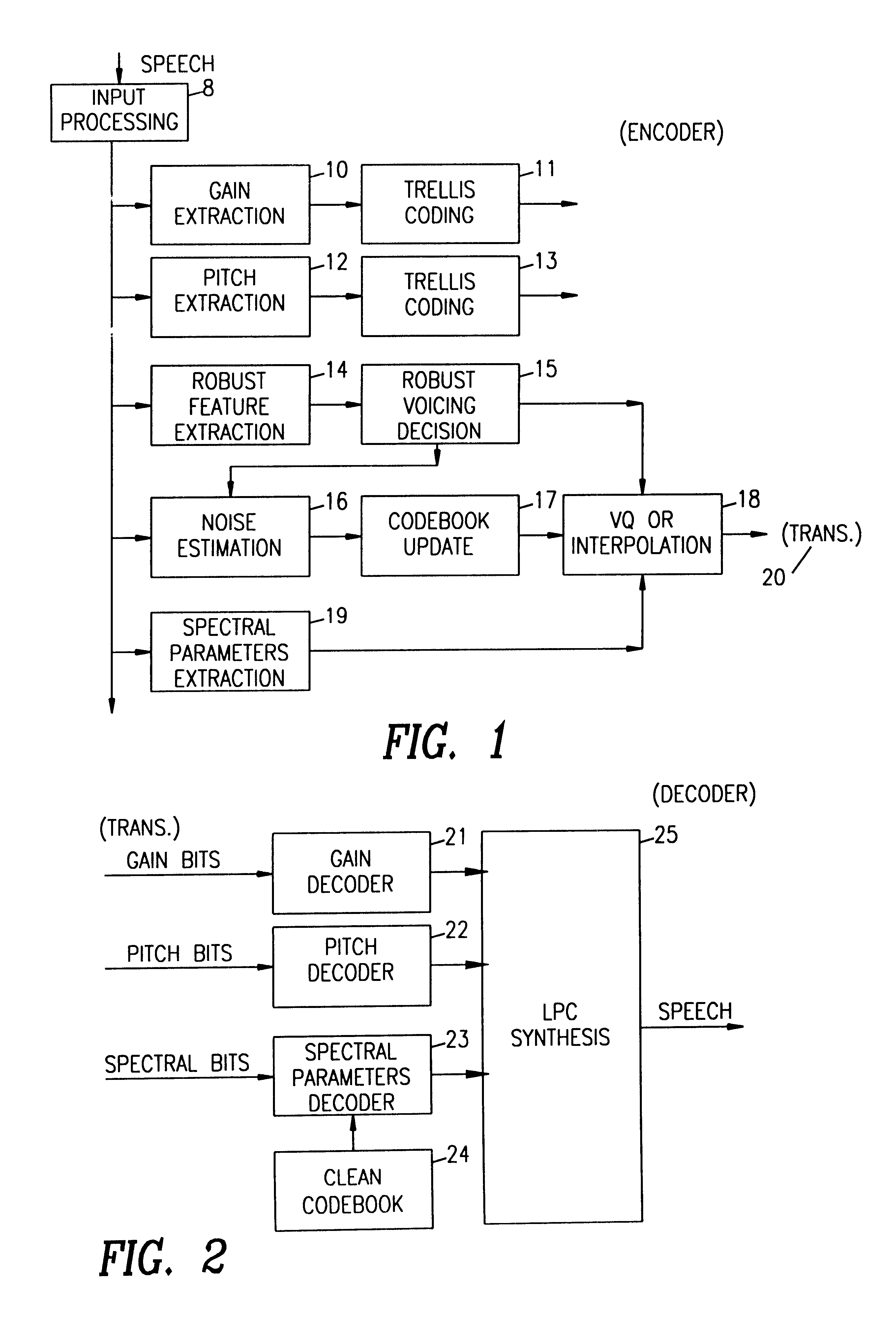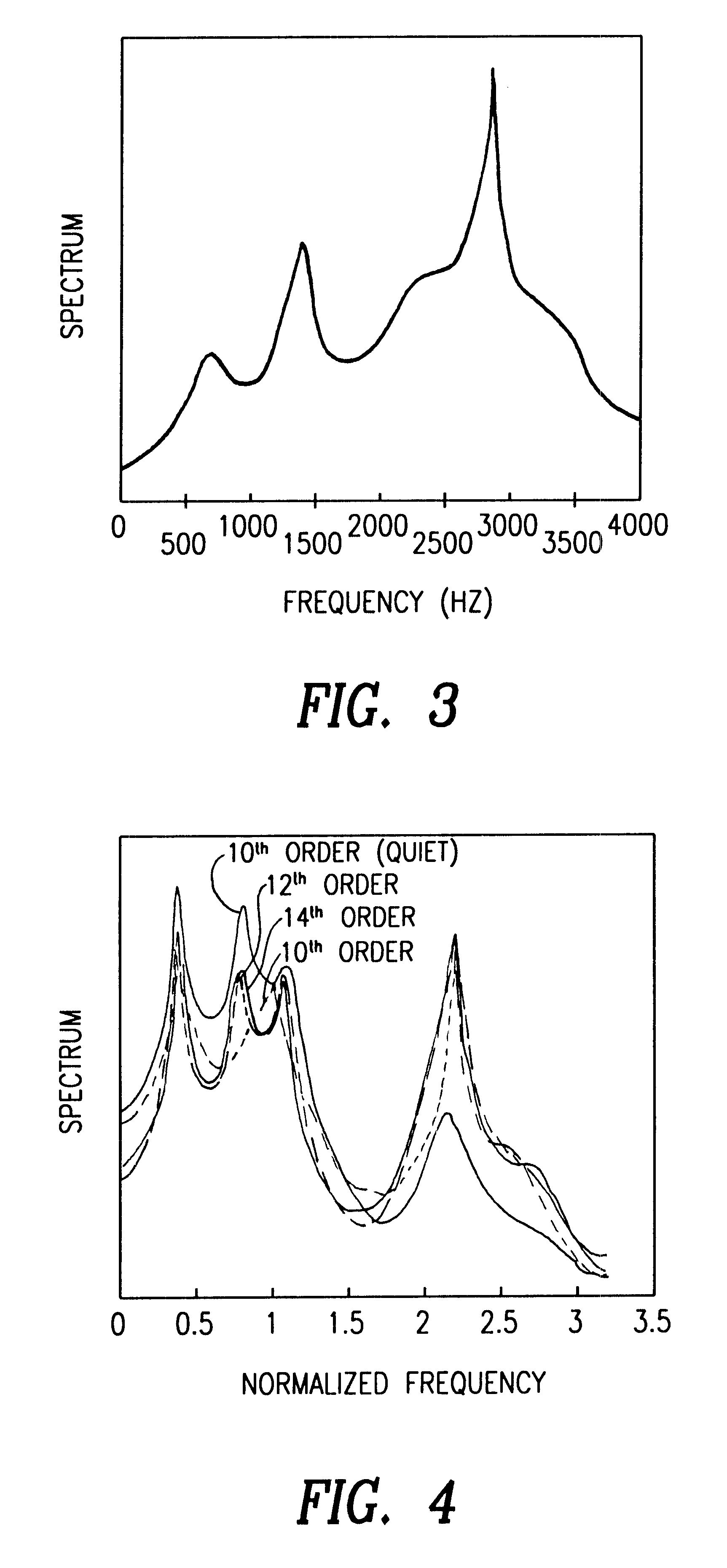Enhancement of speech coding in background noise for low-rate speech coder
a speech coder and low-rate technology, applied in the field of enhanced speech coding techniques for low-rate speech coders, can solve the problems of low-rate voice significantly muffled and buzzy, unintelligible encoded speech, and gain has a predominantly annoying effect, and achieves significant intelligibility enhancement, high-quality speech coding, and better spectral reproduction
- Summary
- Abstract
- Description
- Claims
- Application Information
AI Technical Summary
Benefits of technology
Problems solved by technology
Method used
Image
Examples
Embodiment Construction
Referring to FIG. 1, a block diagram of an encoding sequence in accordance with the present invention illustrates the processing of input speech frames. The encoding processing is basically similar to that used in the aforementioned U.S. Pat. No. 4,975,956. The LPC features are generated for each speech frame as an input processing step (8). The gain and pitch parameters are extracted (10, 12) and converted to gain and pitch bits by trellis coding (11, 13). LPC spectral parameters are extracted (19) and converted to line spectrum frequencies (LSPs) and formants for the subsequent vector quantization and / or interpolation (VQ / I) step (18) in a low-bit-rate transmission. The main differences are in the employment of robust LPC feature extraction and voicing decision (14, 15), noise estimation (16), and updating of a clean codebook (17), in order to provide better spectral representation and codeword matching for input speech in a noisy environment. Upon optimal "noisy" codeword matchin...
PUM
 Login to View More
Login to View More Abstract
Description
Claims
Application Information
 Login to View More
Login to View More - R&D
- Intellectual Property
- Life Sciences
- Materials
- Tech Scout
- Unparalleled Data Quality
- Higher Quality Content
- 60% Fewer Hallucinations
Browse by: Latest US Patents, China's latest patents, Technical Efficacy Thesaurus, Application Domain, Technology Topic, Popular Technical Reports.
© 2025 PatSnap. All rights reserved.Legal|Privacy policy|Modern Slavery Act Transparency Statement|Sitemap|About US| Contact US: help@patsnap.com



